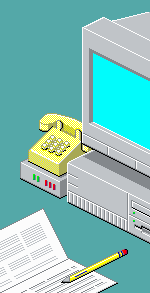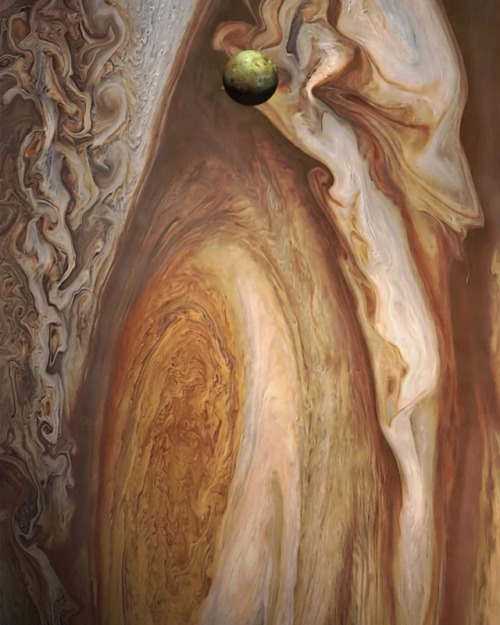Bill Gates Once Released A Jar Full Of Mosquitos Into The Audience During A TED Talk On Malaria, Stating

Bill Gates once released a jar full of mosquitos into the audience during a TED talk on malaria, stating “There’s no reason only poor people should have the experience.”
More Posts from Tres-4b-blog and Others

Disclaimer: As always, this is a guide on how I like to study maths and how I did well in final exams- but of course doesn’t work for everyone! These are only suggestions. ´・ᴗ・`
Mindset- A lot of people dislike maths and a big reason (from experience) is that people believe that it is too hard/ don’t understand. The great thing with maths that is different to subjective classes like English- if you know all of your concepts and formulae, you WILL do well. Your mind will help you pull through. Maths in honestly not that difficult. Everything that is hard is really just the concepts you know, in a more creative way.
The Mistake Palm card- Any silly errors you make- put down onto a palm card in terms of topic. For example, on my “Sketching graphs” topic, a mistake I make is not marking the point of inflexion. Things like not forgetting to mark your axes, label a point etc. go here.
The Mistake Word document- your mistakes from practice tests, exams at school and questions you don’t know how to solve initially all go on this. Scan/ take a photo and dump it into Word. This is for you to go over a few months later (or before your test) to make sure you know how to do the question! Mine ended up being 20+ for my HSC exam and it definitely helped!
Formulae Palm card- Same as the mistakes palm card, just dump all your formulae and you can carry it around in your pocket to read on the train or wherever you go.
Practice!- Practice papers are the most important thing. Exercises from your textbook are great, but you have to do past papers more so. This is to get familiar with format, tricky questions that could be asked and how fast you can do one.
Study depth, not breadth- Doing question after question from the textbook is not smart studying. A lot of those questions are the same thing but with different numbers so you’re not really giving yourself benefit of different formats. A lot of people saying they “study a lot” when they do this but you have to expose yourself to different kinds of questions. Know when to skip questions if you get the concept and to repeat if you don’t understand.
Timed Conditions- Practice papers under timed conditions are great at home. Aim to do the whole paper in 80-90% of the time to make sure you have time to check in tests! However in Australia, the HSC exam is 3 hours for mathematics when it only takes 1- 1.5 hours to complete- if you’re at home and you finish checking before time is up- just mark it. You’re wasting time by waiting for 3 hours when you could do two more tests in that time.
Don’t Repeat Papers- Don’t repeat papers! Repeat the questions you got wrong. This is because you’ve seen the questions before, and you know what to do. Try to find more practice papers on the internet instead.
I hope this helped anyone who does Mathematics- this probably works best with HSC since I don’t really know how overseas exams work. Thank you!!
Jade
xx










Cosmology’s Biggest Conundrum Is A Clue, Not A Controversy
“This is not some fringe idea, where a few contrarian scientists are overemphasizing a small difference in the data. If both groups are correct — and no one can find a flaw in what either one has done — it might be the first clue we have in taking our next great leap in understanding the Universe. Nobel Laureate Adam Riess, perhaps the most prominent figure presently researching the cosmic distance ladder, was kind enough to record a podcast with me, discussing exactly what all of this might mean for the future of cosmology.
It’s possible that somewhere along the way, we have made a mistake somewhere. It’s possible that when we identify it, everything will fall into place just as it should, and there won’t be a controversy or a conundrum any longer. But it’s also possible that the mistake lies in our assumptions about the simplicity of the Universe, and that this discrepancy will pave the way to a deeper understanding of our fundamental cosmic truths.”
In science, if you want to know some property of the Universe, you need to devise a measurement or set of measurements you can make to reveal the quantitative answer. When it comes to the expanding Universe, we have many different methods of measuring light that fall into two independent classes: using the imprint of an early relic and using the cosmic distance ladder. These two techniques each give solid results that are mutually inconsistent: the distance ladder teams find results that are higher than the early relic teams by about 9%. Since the errors are only about 1-2% on each measurements, this has been dubbed cosmology’s biggest controversy.
But perhaps it’s not about “who is right,” but rather about “what is the Universe doing?” Perhaps it’s a clue, not a controversy. Come learn about the cutting-edge science behind this fascinating and unexpected result.
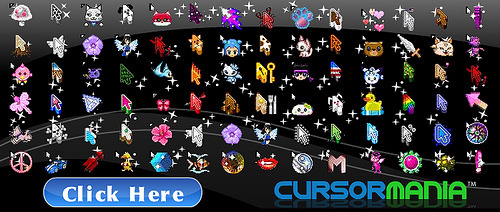

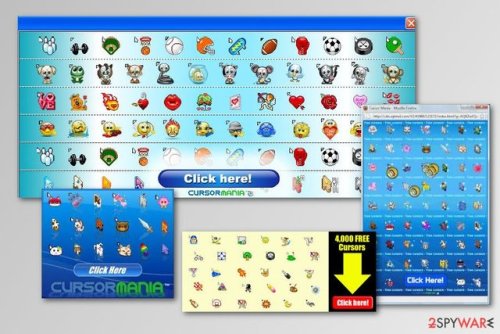


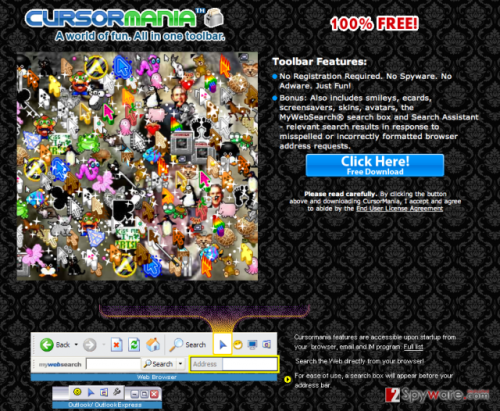
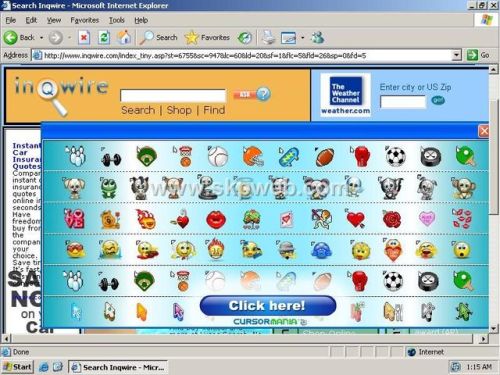

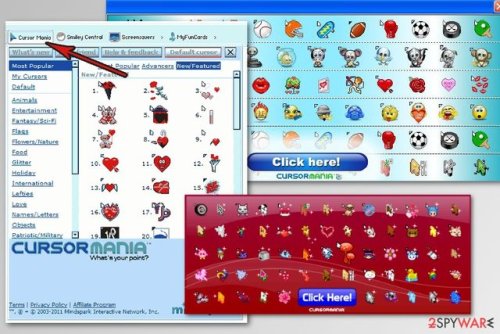
Custom cursor malware that destroyed your computer in 2008 and got you yelled at by your mom moodboard



Science never stops on the Space Station
The past two weeks in Earth orbit saw ESA astronaut Luca Parmitano and NASA astronaut Andrew Morgan conduct two of four planned spacewalks to service the Alpha Magnetic Spectrometer AMS-02.
Spacewalks are time-consuming to prepare, and can occupy many hours of an astronaut’s week in space.
Despite this, much of the science on the International Space Station continues unattended, controlled by operators on Earth.
Planners also find creative ways to fit experiment runs into a crewmember’s busy schedule.
Let us take look at some of the European research running at 28 800 km/h above Earth.
Many experiments, once they are set up, can run in the background while astronauts do other work.
Three experiments like this were initialised and fine-tuned over the past two weeks.
On 18 November, Roscosmos astronaut Alexander Skvortsov changed the camera mode for the Electromagnetic Levitator that recorded the melting and solidifying of metal alloys over the following nights, including one made of copper and zinc – both in vacuum and in helium gas.
The levitator allows researchers to inspect how metals form in controlled circumstances – without gravity skewing results.
The findings will help us understand how to make metals with interesting and useful properties for application in electronics and manufacturing.
The Multiscale Boiling experiment also ran for three days after fine-tuning that started on 11 November.
The experiment added an electrical field to boiling bubbles in space to recreate aspects of gravity.
At night, the experiment was turned off and data downloaded to ground control for researchers eager to understand more about how bubble formation can influence the way heat is transferred.
This study will help improve thermal management systems in space.
Other experiments in progress included radiation monitoring experiment Dosis-3D, and the Matiss-2 experiment that will collect dust and bacteria over six months to assess materials for cleaner spacecraft.
Alexander also prepared the PK-4 science campaign by clearing its tubes of air and then filling them with neon gas.
On 11 November gas was ignited into a plasma by applying a high voltage.
Micro-particles went for a ride in the plasma-tubes and became charged – behaving like atoms.
Lasers and cameras measure how the dust particles move and the data is recorded to hard drives to better understand how atoms interact on a molecular level.
The Russian-European experiment requires astronauts to “catch” the clouds of particles (using electromagnetic fields) when these come into view in the PK-4 chamber.
Crewmembers also need to swap the gas and hard drives for the experiments run remotely from ground.
Some experiments require astronauts to be the test subjects.
On 13 November Luca started his fifth session of the NutrISS experiment by measuring his body composition and reporting on his diet through the Everywear app.
This experiment will help scientists understand and respond to the changing nutritional requirements of humans in space.
Luca also found time during the past two weeks to take an Earth-based rover for a spin.
Called Analog-1, the experiment uses the Space Station as a stand-in for spacecraft orbiting another planet.
From orbit, Luca controlled a robot in the Netherlands, driving this around a geological site and collecting rocks as directed by a science team at ESA’s astronaut centre in Cologne, Germany.
Loading the software and setting up the experiment on the Station computers was done while Luca was outside the Space Station for the first spacewalk of his Beyond mission.
TOP IMAGE….ESA astronaut Luca Parmitano and NASA astronaut Andrew Morgan are helped into their American EMU spacesuits by NASA astronaut Christina Koch and Russian cosmonaut Oleg Skripochka ahead of the second spacewalk to service AMS-02. The Alpha Magnetic Spectrometer AMS-02 is a cosmic ray detector that is helping scientists understand more about the origins of our Universe. To continue delivering groundbreaking science, its cooling system must be upgraded. However, it was never designed to be maintained in orbit making the spacewalking series particularly complex. ESA/NASA
CENTRE IMAGE….The Electromagnetic Levitator (EML) in the Columbus module of the International Space Station. The EML multi-user facility is designed for containerless materials processing in space. This photo was taken by ESA astronaut Alexander Gerst during his Blue Dot mission in 2014. ESA/NASA
LOWER IMAGE….We know our world is made of atoms and molecules, but even with the most powerful microscope we cannot see them moving, meaning our understanding of how molecules interact is based on experimentation and assumptions. The ESA–Roscosmos Plasma Kristall-4 experiment is recreating atomic interactions on a larger scale. A plasma is an electrically charged (‘ionised’) gas. It is considered to be the fourth state of matter, distinct from gas, liquid and solid matter. The image shows the parabolic flight setup of PK-4 used as a test model for the International Space Station. The plasma (orange glow) is created in a U-shaped glass tube with an electric field. The microparticles trapped in the chamber are illuminated by a green laser light allowing the observation of the motion of the particles. Plasma Kristall-4 will inject microscopic dust particles into a neon and argon tube to act as atom substitutes. As they float in the charged gas, they will collect negative charges as positive ions accumulate around them. As a result, they will start to repulse each other – just like atoms do in a fluid state. Doing this research on Earth is not possible – the dust particles would fall with gravity and the simulated atoms would not behave realistically. This experiment is making the atomic scale visible for analysis and will help scientists to understand the interactions of atoms. Michael Kretschmer
Advice to a New Programmer
So much advice is heaped upon beginners that it can be hard to know where to start. However, these five practices are the foundation upon which everything else is built. The beginner I have in mind has a basic understanding of how programming works, has written mostly small programs of varying complexity, and is heading off to either a career in the field or committed to excellence for his or own personal projects. There is only one truly foundational activity in programming: writing code. To be good at it, you’re going to have to write a lot of code. That big body of work can be a vehicle for growth, or an exercise in repeatedly practicing a limited set of skills. To avoid the latter, you need to: Read a lot of code. Specifically, read a lot of code by excellent programmers. Not just good programmers, like the guy down the hall, but excellent ones. Due to the huge amount of open source today, this is easy to do. When I was learning Java, I read code from the Tomcat project and from the CI server, Cruise Control. I’ve read lots of good code since. It might be tempting to look for main() and start from there, but you’re likely to spend a lot of time just reading set-up code and command-line parsing. I prefer to scan the filenames to look for some activity that interests me and then dig into those files. It’s not crucial to understand the whole project or the ins and outs of the entire design, you’ll wear yourself out doing this. Read the code. Look at the comments, see what the authors are doing, and how they went about it. Learn your tools thoroughly. I think the greatest loss of programming time is not in debugging or rewriting code, but in the innumerable seconds lost here and there by developers who don’t really know their tools. I am referring to: the IDE, the language, the build system, and the VCS. Of these, the IDE and the language are by far the most important. You should, after a few weeks of practice, know almost every keystroke combo in the IDE, so that you touch the mouse only when it saves a lot of keystrokes. If you know the keystrokes, you know the commands. If you use the mouse only, you know only menus on which you tend to click on the same one or two entries. Knowing the IDE is pure discipline. Knowing large languages, such as Java or C++, takes more than discipline. They’re huge, as are their libraries. Reading is the best approach, in my view. Read code that uses features you don’t know and you’ll look for opportunities to use them. Books (rather than blogs) are another excellent source. Read about features that are on the periphery of what you use currently, and soon you’ll find the periphery expanding. Knowing the VCS and build systems make you a desirable team member — who doesn’t waste time due of ignorance of important operations. Plan your code before you write it. I think this is the most difficult item on this list. In exchange, it probably delivers the most benefit. I’m not thinking of formal design — at your stage, that’s unlikely to be necessary. But you do need to plan out the code in some manner other than carrying it around in your head. The simplest approach is to write up a small document (I frequently use a mind map): What are the requirements for this code? How will you implement it? What do I need to know that I don’t know now? What are the objects I will need or need to create? And write this out. Only then begin to code, you’ll find the code much easier to write, to document, and to get correct. Save your notes — they’re great reference material. Write lots of code and have it reviewed. If your site does not do code reviews, do them yourself. Find the best programmer who’ll give you useful advice in a way that can be heard and understood. Don’t be a pest, but don’t avoid the process because you’re shy, busy, or feel you’re good enough, etc. Code reviews should be part of your programming life. Be creative. Try pair programming with someone more senior than you for an afternoon. The important thing is that you need feedback that you cannot give yourself. Write tests as you code. This advice is perhaps the only controversial item here. It’s not an endorsement of TDD. But it is an endorsement of knowing that your code works in most scenarios it will face. Start with unit tests and exercise new code with edge-case values. For example, does your function work if it is passed a negative value, or the maximum integer size? If not, does it throw an informative exception or just blow up? If not an exception, have you narrowed the range of inputs with asserts? If so, test the asserts. Use the planning you did earlier to write mocks, and then begin testing your new code with objects you still need to write. This will clarify design issues in your current code and the upcoming objects. Save your tests and run them prior to every check-in, so that they can be early warning systems for later code that breaks your current code. There’s a lot more advice and many wise sayings that can be added to this list. But that’s part of the problem: There’s so much advice available that it’s difficult to know exactly where to start. For that reason, I purposely limit my recommendations to just five points. If you apply them with diligence, you’ll soon find two things: You’ll be able to handle progressively larger and more important tasks, and you’ll look back in embarrassment at code you wrote just a few months ago. Both experiences are sure signs of progress. Good luck!
-
 paperballoons liked this · 3 years ago
paperballoons liked this · 3 years ago -
 z-knows-better liked this · 4 years ago
z-knows-better liked this · 4 years ago -
 6kilowwww liked this · 5 years ago
6kilowwww liked this · 5 years ago -
 tres-4b-blog reblogged this · 5 years ago
tres-4b-blog reblogged this · 5 years ago -
 tres-4b-blog liked this · 5 years ago
tres-4b-blog liked this · 5 years ago -
 jaclynwashere reblogged this · 5 years ago
jaclynwashere reblogged this · 5 years ago -
 gottadotherightthing-blog liked this · 5 years ago
gottadotherightthing-blog liked this · 5 years ago -
 wackem liked this · 5 years ago
wackem liked this · 5 years ago -
 hellspawnnoises liked this · 5 years ago
hellspawnnoises liked this · 5 years ago -
 profoundkidherringshark-blog liked this · 5 years ago
profoundkidherringshark-blog liked this · 5 years ago -
 nocakesformissedith liked this · 6 years ago
nocakesformissedith liked this · 6 years ago -
 ambermation liked this · 6 years ago
ambermation liked this · 6 years ago -
 hoodinyi liked this · 6 years ago
hoodinyi liked this · 6 years ago -
 raging-rainhoe reblogged this · 6 years ago
raging-rainhoe reblogged this · 6 years ago -
 raging-rainhoe liked this · 6 years ago
raging-rainhoe liked this · 6 years ago -
 gummydinosaur liked this · 6 years ago
gummydinosaur liked this · 6 years ago -
 rebel-saint liked this · 6 years ago
rebel-saint liked this · 6 years ago -
 brownsugar-sweetvanilla liked this · 6 years ago
brownsugar-sweetvanilla liked this · 6 years ago -
 addison-is-a-nerd liked this · 6 years ago
addison-is-a-nerd liked this · 6 years ago -
 quarantini reblogged this · 6 years ago
quarantini reblogged this · 6 years ago -
 rangerose liked this · 6 years ago
rangerose liked this · 6 years ago -
 tee-renee24 liked this · 6 years ago
tee-renee24 liked this · 6 years ago -
 nevenastark liked this · 6 years ago
nevenastark liked this · 6 years ago -
 waywardwitchyboy liked this · 6 years ago
waywardwitchyboy liked this · 6 years ago -
 werewolffings liked this · 6 years ago
werewolffings liked this · 6 years ago -
 reinbowcat96 liked this · 6 years ago
reinbowcat96 liked this · 6 years ago -
 inuyasha907 reblogged this · 6 years ago
inuyasha907 reblogged this · 6 years ago -
 inuyasha907 liked this · 6 years ago
inuyasha907 liked this · 6 years ago -
 zionnyko reblogged this · 6 years ago
zionnyko reblogged this · 6 years ago -
 bizzybuzzybee-blog liked this · 6 years ago
bizzybuzzybee-blog liked this · 6 years ago -
 itsdanajane16 liked this · 6 years ago
itsdanajane16 liked this · 6 years ago -
 elfenbensord liked this · 6 years ago
elfenbensord liked this · 6 years ago -
 not-by-your-side-1 liked this · 6 years ago
not-by-your-side-1 liked this · 6 years ago -
 5buchou liked this · 6 years ago
5buchou liked this · 6 years ago -
 pallenova liked this · 6 years ago
pallenova liked this · 6 years ago -
 theluvvbeeloww liked this · 6 years ago
theluvvbeeloww liked this · 6 years ago -
 satiatemydesires liked this · 6 years ago
satiatemydesires liked this · 6 years ago -
 estrellahermosilloblog reblogged this · 6 years ago
estrellahermosilloblog reblogged this · 6 years ago -
 dustymarble liked this · 6 years ago
dustymarble liked this · 6 years ago -
 moonshadow172 liked this · 6 years ago
moonshadow172 liked this · 6 years ago

